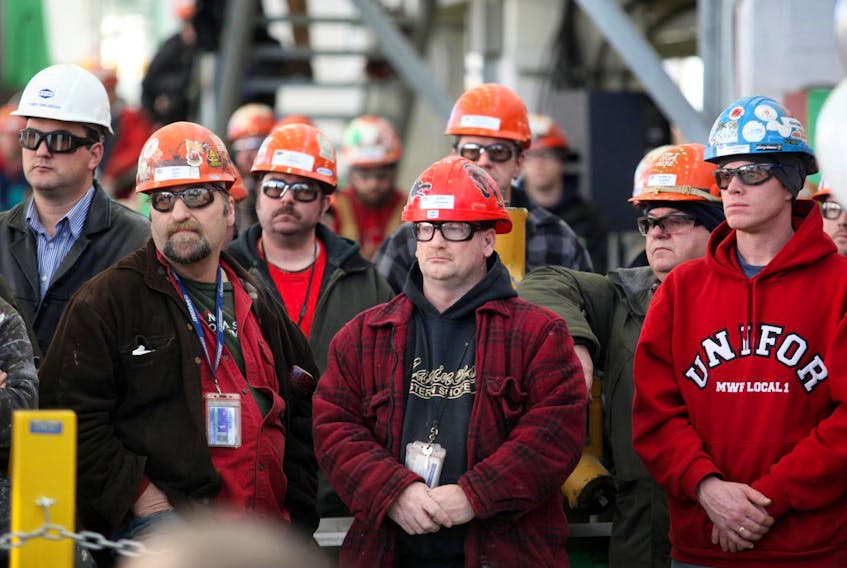The federal government has spent $11.8 million on legal fees relating to the Canadian Surface Combatant project over the past two years, some of that owing to a large number of amendments to the project’s request for proposals.
In an answer to a written question posed last month by a Calgary Conservative MP, Public Services and Procurement Canada confirmed that 88 amendments had been made between July 1, 2016, and Oct. 2, 2018 to the request for proposals for the massive, multibillion-dollar project that aims to replace the Royal Canadian Navy’s fleet of frigates.
The request for proposals — the document that interested consortiums would have crafted their bids around — was released to 12 companies that had been pre-qualified to participate in the procurement by Irving Shipbuilding in October 2016. Irving is the prime contractor for the combat portion of the National Shipbuilding Strategy, which includes the Arctic Offshore Patrol Ships and the Canadian Surface Combatant, and is tasked with building the 15 warships at its Halifax shipyard. At a projected cost of between $56 and $60 billion, it’s the largest and most complex procurement in Canadian history.
There were a number of delays in the closing date for the request for proposals. Originally set for April 2017, the first bids weren’t received until last November. In its many technical briefings and media releases from that period, PSPC said the delays were partially as a result of the back-and-forth between industry, government and Irving — feedback which resulted in a number of amendments to the RFP.
“A total of 88 amendments were issued by Irving Shipbuilding between November 1, 2016 and August 13 2018,” the order paper question response reads.
“These amendments were developed and issued to address inquiries from the 12 pre-qualified bidders, and to incorporate process improvements to the competitive RFP so as to maximize the opportunities for bidders to demonstrate the value of their solutions to Canada.”
The response goes on to say the $11.8 million was spent by the government of Canada on project legal fees during the amendment period, but that PSPC is not able to provide a breakdown on how much was spent on the amendments themselves.
PSPC also noted that because Irving issued the RFP, they would have also incurred legal fees.
In the end, three firms submitted bids for the Canadian Surface Combatant and last month the federal government chose a consortium of Lockheed Martin Canada and BAE Systems offering the UK navy’s Type 26 global combat ship as the preferred bidder.
Conservative Edmonton West MP Kelly McCauley didn’t formally file the written question, but it was his idea.
“The government has been incredibly opaque on the whole Canadian Surface Combatant (project) and everything else with shipbuilding,” he said.
“We started hearing stories about amendment after amendment delaying the project, while the Parliamentary Budget Officer has commented every month it’s delayed it’s an extra quarter billion dollars in costs. We’re trying to figure out what caused the delay and this was part of it — 88 amendments and a huge bill for taxpayers.”
David Perry, senior analyst with the Canadian Global Affairs Institute said the number of amendments made to the Canadian Surface Combatant RFP had been basically unheard of in Canadian procurements until now.
“People in industry have told me that they had never seen anything comparable on a project like this,” Perry told The Chronicle Herald.
“Some of the firms working on this told me when they say 88 changes, it kind of underrepresented what actually happened because with one amendment they would sometimes be publishing a list of 100s of pages that had changed. One company tried to ballpark it for me and said we’re talking about thousands of pages of RFP (changes).”
Due to the complex nature and overall importance of the procurement, he’s certain every keystroke would have been approved by a legal team.
That said, Perry doesn’t necessarily see all these changes — and their associated costs — as a bad thing.
“I think this is actually an example of the government trying to do something different that hasn’t been done before and actually making a lot of changes to the RFP based on questions and based on feedback where in the past they probably would have just recognized there was a problem, kept going anyway, and run a significant risk that the procurement would have failed because you didn’t get compliant bids,” he said.
Without some fluidity in the hyper-technical requirements set out in an RFP of this nature, Perry said you run the risk of cutting off an otherwise perfectly compliant bidder over a minor change. And in a procurement of this size and significance, more bidders are better.
“When you weigh it against a procurement with a budget of $50 or $60 billion, $11 million in legal fees, presuming everything goes well and they’re able to get the contract, that’s money well spent,” he said.









